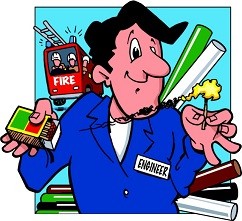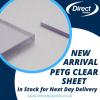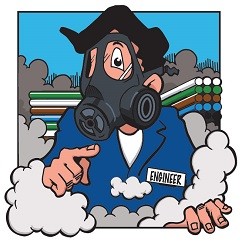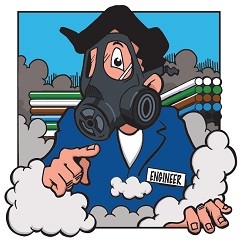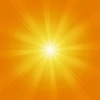Plastics and their Fire Ratings
This time we thought we’d delve into the subject of ‘fire ratings’, not something that crops up every day but certainly an important subject none the less. The test procedures though (and I apologise for this) are typically all written in a very long winded geeky kind of way, I can’t do much about this but I’ll do my best as usual to make it as simple and painless as possible. I’ve also created a table with all the materials listed and the rating for you at the bottom.
What are they testing for?
The testers actually looking for a couple of things, firstly whether the material extinguishes itself or whether it spreads the fire and then also if it’s resistant to ignition in the first place.
The burns
They have two types of burn test: V rating which is a vertical burn test, this is a bit more stringent and a higher rated, if the plastic fails there, the other test they would perform is the “HB” which stands for horizontal burn, this one is where the material is laid at 45 degrees when it’s tested and obviously attracts a lower rating.
Safety standard
The standard assigned to testing the flammability of plastics is named: UL94, so you’ll see this number at the beginning to denote that it’s been tested to the proper standard, it will then be followed by the testers result or performance, so for example: UL94 HB means the material has been tested to the standard and has passed at the HB rating (I’ve gone into detail below what the plastic must do to get its rating)
What’s the numbers and which is the best?
The best performers would show a V rating of which there are 3 ‘V’ levels, starting with V-0 as the best, then V-1 and finally V-2, if the material fails at the V testing stage, as I mentioned earlier it will then be tested for an HB rating. Most engineering plastics though have the HB rating but there are some with those V ratings (to be revealed later)
How’s it done?
What can I say, I’m sorry about this next bit, but I’m at the point where I’m going to have to describe below exactly how these tests are carried out, brace yourselves!
Size of test piece:
The size of the samples tested are usually 125mm x 13mm and the thicknesses are usually 0.7mm, 1.5mm, 3mm & 6mm
Procedure for the V ratings
- They use 10 test pieces (5 sets of 2) per thickness
- Half are left to sit at 23 degrees for 2 days
- The other half are left to sit at 70 degrees for a week
- The test pieces are held vertical and 10mm above the Bunsen burner
- A 20mm high blue flame is applied to the sample and removed after 10 seconds
- If it then stops burning within 30 seconds, the flame is re-applied for another 10 seconds
- If there are any drips, they’re allowed to land on some cloth material
To pass for V-0 rating
- It must not burn for more than 10 seconds after either flame application
- The combined burning time can’t exceed 50 seconds for the whole batch
- It must not flame all the way up to the top of the sample
- There can’t be any flaming drips that set the cloth below alight
- It must not glow for more than 30 seconds after the 2nd flame application
To pass for V-1 rating
- It must not burn for more than 30 seconds after either flame application
- The combined burning time can’t exceed 250 seconds for the whole batch
- It must not flame all the way up to the top of the sample
- There can’t be any flaming drips that set the cloth below alight
- It must not glow for more than 60 seconds after the 2nd flame application
To pass for V-2 rating
- It must not burn for more than 30 seconds after either flame application
- The combined burning time can’t exceed 250 seconds for the whole batch
- It must not flame all the way up to the top of the sample
- There can be any flaming drips that set the cloth below alight
- It must not glow for more than 60 seconds after the 2nd flame application
Procedure for the HB rating
- The samples are left to sit at 23 degrees for 2 days
- Its mounted at a 45 degree angle
- The sample is marked at 25mm and 100mm from one end
- Its held at the top end, and the bottom end its 10mm above some wire gauze
- A 20mm high blue flame is applied to the sample and removed after 30 seconds
- If it continues to burn after the flame is removed, the time it takes for the plastic to burn between the two marks is measured and then calculated and recorded as mm per minute
To pass HB rating
- The plastic cannot exceed 40mm per minute over a 75mm span (samples 3mm and thicker)
- The plastic cannot exceed 75mm per minute over a 75mm span (samples of less than 3mm)
- The plastic must stop burning before it reaches the 100mm mark
|
Material |
UL94 Rating |
|
Acetal |
HB |
|
Delrin |
HB |
|
Nylon 6 |
HB |
|
Nylon 6.6 |
HB |
|
Oilon |
HB |
|
HDPE |
HB |
|
PET (Polyester) |
HB |
|
Polypropylene |
HB |
|
Polyurethane |
HB |
|
PTFE |
V-0 |
|
PEEK |
V-0 |
|
PVC |
V-0 |
|
ReGen |
HB |
|
Tufnol (Stk grades) |
NA* |
|
UHMWPE |
HB |
|
ABS |
HB |
|
Acrylic |
HB |
|
Polycarbonate |
V-2 |
|
PVDF |
V-0 |
*We spoke to Tufnol who didn’t have anything for their 1P/13, Kite & Whale materials, but they do have many grades that do have excellent fire performance (see below)
Fire resistant (FR) Plastics
So what I then did, just in case was to look into whether common additives such as Mos2 or Glass Filled had any impact on the flammability factor and discovered that they didn’t.
There are improved flame retardancy grades of certain plastics available often denoted by an ‘FR’ in their title, these though come with either a hefty price premium or a pretty substantial minimum/special order volume. An FR grade polypropylene sheet is available and also Tufnol do make some pretty trick laminates that are V-0 (often used in underground and aerospace applications)
